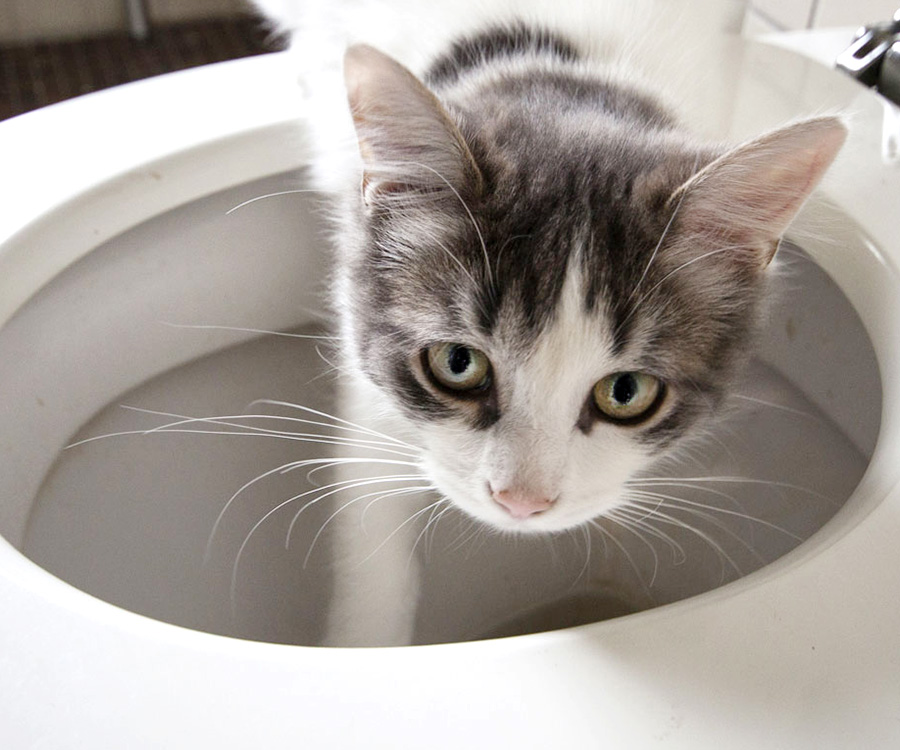The Risks of Flushing Cat Poop in Your Toilet - Preventive Steps
The Risks of Flushing Cat Poop in Your Toilet - Preventive Steps
Blog Article
This article below about Can You Flush Cat Poo or Litter Down the Toilet? is particularly compelling. You should investigate it.

Intro
As feline proprietors, it's important to bear in mind exactly how we dispose of our feline close friends' waste. While it may seem convenient to purge feline poop down the toilet, this practice can have harmful consequences for both the setting and human wellness.
Environmental Impact
Purging feline poop introduces hazardous pathogens and bloodsuckers into the water system, posing a substantial risk to aquatic communities. These impurities can negatively impact aquatic life and concession water top quality.
Health Risks
In addition to ecological problems, purging pet cat waste can also position health and wellness dangers to people. Cat feces might have Toxoplasma gondii, a bloodsucker that can create toxoplasmosis-- a possibly serious health problem, especially for pregnant women and people with damaged immune systems.
Alternatives to Flushing
Fortunately, there are safer and extra accountable means to throw away pet cat poop. Think about the following alternatives:
1. Scoop and Dispose in Trash
The most common technique of dealing with feline poop is to scoop it into a biodegradable bag and throw it in the trash. Be sure to make use of a committed litter inside story and deal with the waste promptly.
2. Use Biodegradable Litter
Opt for naturally degradable pet cat litter made from materials such as corn or wheat. These clutters are environmentally friendly and can be safely taken care of in the trash.
3. Bury in the Yard
If you have a lawn, take into consideration burying feline waste in a marked location far from vegetable gardens and water sources. Be sure to dig deep sufficient to avoid contamination of groundwater.
4. Set Up a Pet Waste Disposal System
Purchase a pet dog waste disposal system especially developed for pet cat waste. These systems utilize enzymes to break down the waste, decreasing smell and ecological impact.
Conclusion
Accountable family pet possession expands past providing food and shelter-- it additionally involves appropriate waste management. By refraining from flushing pet cat poop down the toilet and opting for different disposal methods, we can lessen our environmental footprint and protect human health and wellness.
Why Can’t I Flush Cat Poop?
It Spreads a Parasite
Cats are frequently infected with a parasite called toxoplasma gondii. The parasite causes an infection called toxoplasmosis. It is usually harmless to cats. The parasite only uses cat poop as a host for its eggs. Otherwise, the cat’s immune system usually keeps the infection at low enough levels to maintain its own health. But it does not stop the develop of eggs. These eggs are tiny and surprisingly tough. They may survive for a year before they begin to grow. But that’s the problem.
Our wastewater system is not designed to deal with toxoplasmosis eggs. Instead, most eggs will flush from your toilet into sewers and wastewater management plants. After the sewage is treated for many other harmful things in it, it is typically released into local rivers, lakes, or oceans. Here, the toxoplasmosis eggs can find new hosts, including starfish, crabs, otters, and many other wildlife. For many, this is a significant risk to their health. Toxoplasmosis can also end up infecting water sources that are important for agriculture, which means our deer, pigs, and sheep can get infected too.
Is There Risk to Humans?
There can be a risk to human life from flushing cat poop down the toilet. If you do so, the parasites from your cat’s poop can end up in shellfish, game animals, or livestock. If this meat is then served raw or undercooked, the people who eat it can get sick.
In fact, according to the CDC, 40 million people in the United States are infected with toxoplasma gondii. They get it from exposure to infected seafood, or from some kind of cat poop contamination, like drinking from a stream that is contaminated or touching anything that has come into contact with cat poop. That includes just cleaning a cat litter box.
Most people who get infected with these parasites will not develop any symptoms. However, for pregnant women or for those with compromised immune systems, the parasite can cause severe health problems.
How to Handle Cat Poop
The best way to handle cat poop is actually to clean the box more often. The eggs that the parasite sheds will not become active until one to five days after the cat poops. That means that if you clean daily, you’re much less likely to come into direct contact with infectious eggs.
That said, always dispose of cat poop in the garbage and not down the toilet. Wash your hands before and after you clean the litter box, and bring the bag of poop right outside to your garbage bins.
https://trenchlesssolutionsusa.com/why-cant-i-flush-cat-poop/

As a keen reader about How to Dispose of Cat Poop and Litter Without Plastic Bags, I think sharing that chunk was a good idea. Please take the time to distribute this write-up if you appreciated it. Thank you for your time. Kindly pay a visit to our blog back soon.
Visit Our Website Report this page